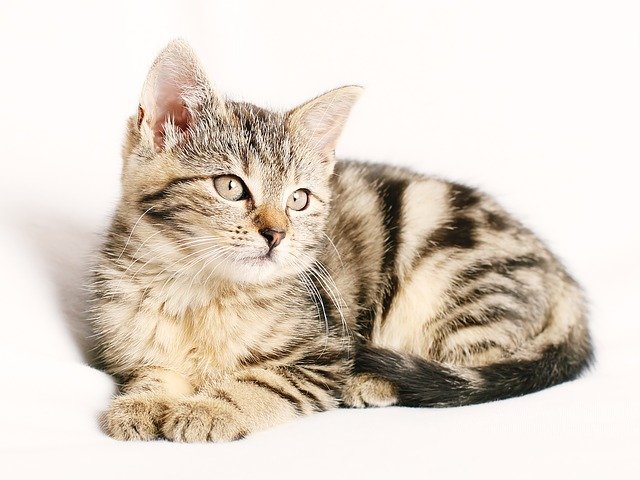When it comes to winter, how to keep outdoor cats warm?
Instead of hay, use straw to insulate the shelter. Cats can also keep warm with mylar blankets that have been custom-sized. Avoid using traditional fabric towels or blankets because they can trap moisture and make the interior chilly. In order to raise the shelter off the ground and increase insulation, place it on a pallet or other flat surface.
For more specific information on how to keep outdoor cats warm, continue reading.
Table of Contents
Precautions To Protect Cats In Winter
Prior to driving, inspect your vehicle.
Check your car’s undercarriage before you get behind the wheel. In order to find warmth, animals—including cats and kittens—will occasionally climb up underneath cars or inside engines. Don’t forget to check the area between your tires and wheel wells!
In an area where cats can access them, avoid using chemicals, salt, or antifreeze.
Avoid storing antifreeze in places where cats can easily access it, and don’t use chemicals or salt to melt snow. When licked off of paws or fur, these substances may cause harm or even death. In addition to considering laying down sand or gravel to provide traction, animal-friendly deicers are typically available at pet stores.
How To Keep Outdoor Cats Warm?
These practical suggestions will make all the difference, whether you’re caring for your own outdoor cats or simply want to assist some ferals or strays get through a harsh winter:
- Create or purchase a cat shelter.
- Warming pads or heaters should be set up.
- Give cats a lot of fresh food.
- Every day, make sure the cats have access to fresh water.
Build Or Buy A Cat Shelter
Having a secure place for your outdoor cat to sleep is the best way to keep it warm during the winter. During the long, chilly winter nights, a cat needs a place to stay that is just big enough for cats (or a few), but not for dogs, raccoons, possums, skunks, or other wild animals. Personally, I’ve set up a few different areas for my outdoor cats.
I have an outdoor “closet” in one place.” (My washer and dryer are actually from here.) To enter and exit, they can use a tiny cat door. The closet works well as a windbreak. The temperature and comfort of the cats are significantly affected by simply reducing (or completely eliminating) the wind.

Don’t Need Elaborate Shelter To Be Effective
My other shelter is an “igloo” style structure. Okay, technically speaking, it’s a “dogloo,” but I like cats. . . what can Anyway, the igloo isn’t very big, but it has a small opening and is insulated, making it warmer in winter and cooler in summer. The sleeping bag is also there. On account of the sleeping bag’s insulation for cold weather, the cats will have something cozy and warm to cuddle up in.
It’s important where you set up the igloo. My setup is in our carport, which itself offers some wind protection. All three sides of my carport are enclosed by walls. I’ve discovered that being in the carport can be at least five degrees warmer even on the chilliest winter days. My outdoor cat closet is enclosed on all four walls (with only one door for me and the cats to enter and exit), so I haven’t measured the temperature there, but I’m confident the difference is comparable.
Don’t Put Food Near The Cat Shelters
You shouldn’t put cat food in or close to cat shelters. Particularly if there is leftover food to attract vermin, cat food will attract wildlife like raccoons, and cats will rarely sleep close to where they eat. Feed away from the shelters.
Routinely Inspect Your Shelters!
If you reside in a region that experiences snowfall, this is especially crucial. Cats can be snowed in at cat shelters, where they could become extremely dehydrated and hungry and even pass away.
Checking your shelters is also a good idea to make sure no sick or injured cats are hiding there and to look for wildlife. When your cats are cold, you don’t want to be hosting a family of raccoons!
Check The Engines In Your Cars!
Cats will prefer warm environments, especially mother cats with young kittens. This INCLUDES under your car, the wheel wells, and even the engine. Before starting your vehicle, open the hood and check the engine and any other possible hiding places. As a final precaution, lay on the horn a few more times.
Don’t Use Chemical Deicers On Sidewalks / Driveways
Use rock salt instead of chemical deicers when melting ice to avoid damaging your cat’s paws (and further damage if they lick it off). Pet-friendly substitutes are readily available.
Watch That Antifreeze
You should check to see if your car isn’t dripping antifreeze, and you shouldn’t fill it up in a place where cats can get to it, like the driveway or garage. Resolve to clean up any spills. For dogs and cats, antifreeze is lethal. Though less toxic than antifreezes without propylene glycol, this alternative is STILL dangerous.
Bring Your Cats Inside
Do you have any cats that go outside occasionally? Instead of debating whether it’s too cold outside during the winter, you might just want to bring them inside. If you give your cats cat trees and scratchers, windows to look out of, and lots of playtime, they won’t get bored while they’re inside.
Because not every cat can be brought inside, provide heated shelters, food, and water to help stray cats stay warm outside during the winter. Really, that is all that is necessary to keep the fluffy cats warm and give you a little peace of mind.
Food And Water
Provide extra food and water to help cats stay warm
In order to help cats conserve energy during the winter, increase food portions. Cats can benefit from extra food. The least amount of energy is required to digest canned or wet food, allowing more to be used to fend off the chill.
Instead of letting leftovers freeze, make sure to give animals fresh food and water every day or twice a day.
Prevent food and water from freezing with these methods
- Serve moist food in plasticware. For extremely cold temperatures, offering mostly dry foods that won’t freeze is also effective. However, it requires more energy to digest dry food.
- Use heated electric bowls or reheat canned food and water before serving.
- To prevent water from freezing, use bowls that are deep rather than wide, and place them in sunny areas. Check out some bowls tested by caregivers. Never use metal bowls.
- To help stop food and water from freezing as quickly, spray insulation foam into the underside of plastic feeding bowls.
- Or, you can put a microwavable heating pad, like a Snuggle Safe, under the bowls. Even better, you can create your own homemade heating pad by putting rice in fabric pouches and heating it in the microwave.
- Running water will prevent it from freezing as quickly as still water if there is a water source nearby, such as a spigot. You can also use a water bowl with a fountain feature or a water fountain.
How Cold Is Too Cold For Cats?
Monitoring the circumstances in which your cats live is crucial. They become susceptible to life-threatening medical conditions like hypothermia and frostbite if they are left outside (or inside, for that matter) in below-freezing temperatures. Both of these conditions can be fatal.
Due to a number of variables, including age, length, body mass, fur thickness, and whether they are typically an indoor or outdoor cat, it can be challenging to determine an exact temperature threshold for how cold is too cold for your cats. However, using this quick guide should give you a better idea of when your feline friend might require assistance.
What Outside Temperatures Do Cats Still Manage To Survive?
- Indoor Cats: When the temperature drops below 45°F, it’s probably not a good idea to leave your cat outside if it spends most of its time indoors and isn’t used to the cold. Another helpful rule to remember is that your indoor cat will likely experience the same level of discomfort as you if your home is too cold. In that case, raising the thermostat or considering purchasing some space heaters would likely be a good idea.
- Outdoor Cats: However, if your cat spends the majority of its time outside, it may be able to tolerate temperatures as low as almost freezing. However, as soon as the thermometer falls below 32°F, you should think about either bringing it inside or installing an insulated cat shelter.
- Adult cats and kittens: You shouldn’t leave older cats or young kittens outside when the temperature drops below 45°F, especially at night, just like indoor cats, regardless of whether they’ve spent the majority of their lives outdoors.
Note: In addition to the temperature, it’s important to consider other weather factors as well. Cats can become trapped and disoriented in whiteouts and blizzards, which makes it very challenging for them to find their way back home. This is especially important when it comes to
- older cats that may have vision problems like cataracts and may not be strong enough to weather aggressive storms, and
- young kittens that are not yet familiar enough with their new homes and are more susceptible to getting lost, stuck, or stranded.
Conclusion
Keeping outdoor cats warm was the topic of the article.
When the weather turns chilly, outdoor cats need a place to stay. A doghouse can be modified, you can build your own, or you can buy a suitable shelter at a pet supply store. The kind of cat house you want in your neighborhood is about two feet by three feet and at least 18 inches high. It’s just the right size for one or two cats to cuddle up together for warmth, but it’s not so big that the heat will spread out too quickly.
I appreciate your reading.


